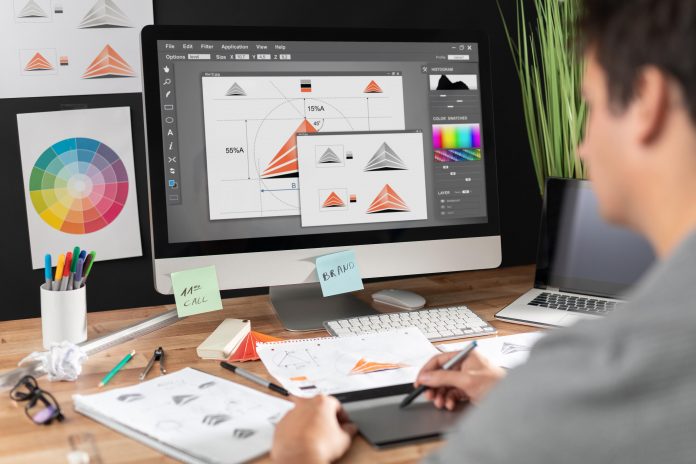Every great skill starts as a dream, and to bring this dream to life, you need to sharpen these skills.
The creative industry is always evolving and as a designer, there are some tips you can use to get you from novice to pro. Here are some of those.
You Have to Practice

It is said practice makes perfect and in the creative industry, this is the motto everyone should adhere to.
In order to get a skill working and to get it to a level where people are willing to pay for it, you are going to put in a lot of practice. In the case of graphic design, you might want to get as many practice tasks as possible and touch on them once in a while.
Website design software is always evolving to include more features and sets that improve the quality of the design. We always suggest using something along the lines of Adobe who are currently the top dogs on the market. You can’t get better nor more professional than them. There are other options, but in the pro world, Adobe is a must know. All other software bases around that, so even if you learn this, you should be able to transition to others easily.
Find Your Niche

One of the best and easiest ways to ace the world of design is to find a niche and do your best to become great at it.
Do you want to create brochures, wedding material, or promotional posters? Then invest your time and resources in adding value to the niche.
Learn about wedding color palettes that speak one way or the other, different calligraphy and fonts and designs that will set you apart from the group. Having a known skillset in a certain field will attract the right clients to your door.
Be Willing to Learn

The creative industry is always evolving and incorporating new aspects and elements. New software is being launched almost every day, new techniques to fasten the process and make better results are being enhanced so, in order to be at pace with top designers, you have to be willing to learn.
Use online avenues where designers meet up and pool their minds. You can learn a lot just by being a part of like-minded people.
Expand Your Territory
When you ace your territory, add a little something to your skillset as well. One thing about the design life, clients will come back if you give them exactly what they want or more.
However, there are clients who might come back with a different request. For instance, if the client came for wedding invites, they might come back for something along the lines of business, such as a business card or something.
This might also happen in the case of a referral. To meet this demand, you should ensure you know more than one aspect of design.
Find Your Tool

With numerous design tools and software on the market, look for one you are conversant with!
Each different software has something that sets it apart from the others and as a novice, it can be difficult to be a pro at all of them at once. However, you can choose one and master it properly before adding the other to the list.
Design is one of the most fun jobs to do and with these tips, you could be a professional in a matter of time.
Receive Feedback In A Good Way

Critique is one of the most draining things for creatives. It’s essential to your ability to improve.
While positive feedback is wonderful when it’s earned, it doesn’t give you anything other than an increased self-worth. It can also be detrimental to your development if it is undeserved and knee-jerk (see: reciprocal backslapping in many forums).
Instead of just saying “What do you think about this?” (your standard answer would be: “It’s great”), it’s better if you ask specific questions. You might ask, “This is a bit lacking for me. Do you believe I have completed it?” Or, ‘Which section of the design did you focus on first? This will allow people to constructively critique your work without making you look like a boorish troll.
Find Your Own Style
You don’t have to hurry, but it is important to discover your own style and orientation. It is impossible to design things in a random fashion and not have a clear plan. It is important to identify your style and focus on creating it. This will make it easier to do the best job.
Something that will be recognizable will give you a lot of power. Ideally you would come to the level where someone sees something that you designed and that person would already know that’s your piece.
Experiment

it’s only by trying out lots of experimental design ideas and putting them into practice that you find out what works best and what you’re good at.
Graphic designers can take this approach when experimenting with new media, techniques and skills. Use a different typeface every time, use colours that you didn’t use before.
Use 3D even if you didn’t use it before. Pick up some new design software. Use a charcoal or ballpoint pen to draw your designs. Let go of a rule and see what happens. Think about how this design would have been done in an earlier age. Use illustration and not photos. Let’s throw all conventions aside and see where it goes.
Most times, the result will be a questionable result. Sometimes, however, you might find something that is really good. Even if you don’t, the act of experimentation will allow your imagination to run wild and see what do you need to improve.









